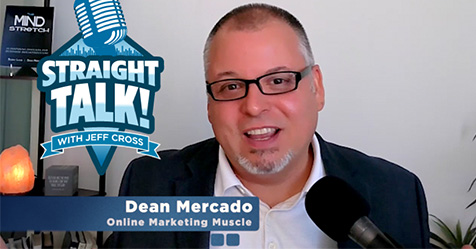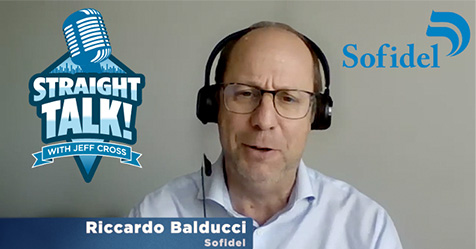More and more, we are seeing an increased interest in accurate cleaning specifications, and the reason why is simple.
The older specifications were written as if they were a book of every cleaning task that was ever conducted.
It was easy for contractors to meet these specifications because high profits allowed them to say “I will” to any request.
Today, low margins and budgetary pressures are forcing clients and contractors to take a closer look at what is actually written in these specifications.
However, the objective of most cleaning programs can be made in a single statement: Keep the building clean at all times.
It starts with a plan
When it comes to reviewing any cleaning program, there are many ways of achieving improved efficiency and high standards.
It all starts with a plan and that plan should be a basic part of every cleaning program.
Such a plan should indicate what, when and how everything in a building should be cleaned.
That plan is then translated into a cleaning specification that converts the plan into a list of cleaning tasks to be performed on a daily, weekly or monthly basis.
A cleaning specification is paramount to a successful cleaning program because it gives a standard to measure success or failure.
In addition, a good cleaning specification can result in not only improved performance, but cost savings as well.
According to Dr. Michael Berry, author of Protecting the Built Environment: Cleaning for Health, every building needs a cleaning program if its owners are serious about protecting health and valuable property.
Get specific
In initiating the development of a set of specifications, the first step is to determine the level of cleanliness desired for each area or similar areas.
Three standards are employed: No soil, no visible soil, and visible soil. These standards determine the level of soil buildup, the amount of traffic the areas receive and frequency of performed tasks.
A minimum specification also contains a daily requirement for waste and litter pickup.
Basic horizontal dusting should also be performed daily, with high and vertical dusting done less frequently.
Remember, each building and, in some cases, each floor will have different requirements.
Defining times
One area where we see more definition in the cleaning specification is vacuuming.
In the past, specifications simply read, “All carpets will be vacuumed.” We now see references to spot, detail, traffic lane, full and litter pickup vacuuming.
It is easy to understand the importance of the right wording when you consider that the times to perform each of the above tasks are:
- Full vacuuming: 11 minutes per thousand square feet
- Traffic lane vacuuming: Seven minutes per thousand square feet
- Spot vacuuming: Four minutes per thousand square feet
- Litter pickup: Two minutes per thousand square feet.
In a 100,000-square-foot building, the difference between what often happens in the building (litter pickup) and what is written in the specs (full vacuuming) can mean a difference of 14.25 hours per night — assuming the building is 95 percent carpet — which translates to $40,911.75 per year or over 40 cents per square foot.
It is easy to figure out that no contractor can afford to provide full vacuuming and will perform with less detail.
Is it affordable?
Cleaning specifications should not be a list of every possible cleaning task, but rather a statement that fully reflects the standard of cleaning one desires and, more importantly, can afford.
To determine affordability, the specifications need to be quantified.
The formula is: Tasks plus desired frequency times a standard cleaning time equals a labor complement.
The standard cleaning time for each task has been developed as a result of time and motion studies by industrial engineers.
A workload, or analysis of current cleaning specifications using time standards, can be an invaluable tool for both in-house operations and building service contractors.
Often a re-analysis will uncover changes from the job commencement, because of changing traffic patterns, the addition or subtraction of staff, etc.
The workload also presents an opportunity to determine the cost effectiveness of new equipment and methods.
In many cases, it is possible to adjust staffing levels, adding additional tasks to staff in areas where cutbacks can’t be made to increase the efficiency of an operation.
Workloading by the numbers
When following the four steps highlighted in the sidebar Workloading Formula (see sidebar), developing a workload plan is addressed.
The determination of the net cleanable square footage is the first step in the workload procedure.
Net cleanable square footage differs from the gross square footage of a building in that it does not contain non-cleanable areas.
The areas, as determined in the specification, are measured and should be recorded on an area summary sheet for both workloading and for future use.
Areas that are commonly segregated are entrances and lobbies, corridors, office tile, office carpet, cafeterias and computer rooms.
Washrooms, stairwells, elevators and light fixtures are normally measured in single units.
Measuring density
A factor that must be taken into consideration in preparing the workload is density, usually noted as light, medium or heavy.
An area is dense by its relationship to other similar areas.
A rating of medium density will cover about 90 percent of the areas being cleaned today.
Once the time per task has been arrived at, it is multiplied by the frequency per year to compute the annual hours or total time.
The total time is divided by the productive hours per worker to arrive at the number of FTEs or cleaners required.
Productive hours differ from paid working hours as they have allowed for coffee breaks, paid lunches, etc.
The cost per cleaner is then determined by using the appropriate wage rate.
Additional factors
Other cost factors that should be included in total costing are vacation pay, workers’ compensation, unemployment insurance, supplies, equipment, uniforms, administrative costs and other benefits attributable to the employee.
An accurate specification that is realistic and outlines the services the contractor will provide also creates a better understanding between the contractor and the owner.
The cleaning contractor, who is searching for ways to reduce costs and improve efficiencies, must be prepared to re-evaluate each contract or operation on a regular basis.
The process is sure to uncover hidden potential profits and reduced costs.
That path to profit or staying within budget starts with a plan — the cleaning specification.


